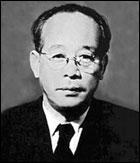The Films of Kenji Mizoguchi
from The New Yorker 9-4-06
by Anthony Lane
“quite simply, one of the greatest of filmmakers.â€
-Jean-Luc Godard
If you know the name already, the assessment will seem uncontentious; for many moviegoers—those familiar with Akira Kurosawa, perhaps, and eager to place “Rashomon†or “The Seven Samurai†at the summit of Japanese cinema—the more likely response will be “Who?â€
There are certainly fertile comparisons to be made between Kurosawa and Mizoguchi; and yet, to those who love the latter, there is no comparison. Kurosawa seems sweaty and overwrought beside the astounding formal finesse of a movie like “Sansho the Bailiff †(1954). I have seen “Sansho†only once, a decade ago, emerging from the cinema a broken man but calm in my conviction that I had never seen anything better; I have not dared watch it again, reluctant to ruin the spell, but also because the human heart was not designed to weather such an ordeal. The film itself is a tale of broken men and women, or of those bent to the breaking point by the harrying furies of society. Kurosawa may have fashioned the thrilling “Throne of Blood†from the plot of “Macbeth,†but Mizoguchi, though he adapted none of the plays, remains the more profound Shakespearean, such are the reversals and accelerations of fortune into which his characters are swept.
..
“Sansho†revolves around the widow and children of a provincial governor, all of them reduced to servitude and worse; the burden of resilience lies with the mother and daughter, and, indeed, it is hard to think of a Mizoguchi plot that does not flow from a female source. In the course of his inquiries into suffering, a woman is invariably both the star witness and the most enduring victim. “The Life of Oharu†(1952) traces the decline of its seventeenth-century heroine from a well-bred servant of the court to an aged prostitute, begging for alms under a sky of tarnished silver. Her crime is to be a slave to her own passions, not to the various men who control her by law. Mizoguchi himself was a womanizer and an avowed frequenter of brothels, and his wife succumbed to mental illness; what manner of guilt or expiation might have lain beneath his intensely sympathetic direction of actresses we can only guess.
Despite Mizoguchi’s pleas for justice, his films could not be farther from tirades. They offer serenity to the point of hallucination, and even their scuffles of violence are like controlled explosions, held in by the composure of the frame. When Oharu learns that a lover has died, she attempts to follow suit, grabbing a knife and trying to stab herself. Her mother rushes to stop her, and the two women take their struggle from the family house to the adjacent wood. And what do we recall of the scene? Not the jab of the blade but the peaceful, sideways motion of the camera, and the way that it stays with them after they have come gaspingly to rest, as if it were breathing in the airy flickers of sunlight on the spearlike shafts of bamboo and so reassuring us that, somehow, all shall be well. If you have never witnessed the visual equivalent of perfect pitch, or understood how a single tracking shot can feel like a declaration of faith, here is your chance. Mizoguchi’s work may brim with the fears of a fatalist, yet it also gleams with unexpected hope.
